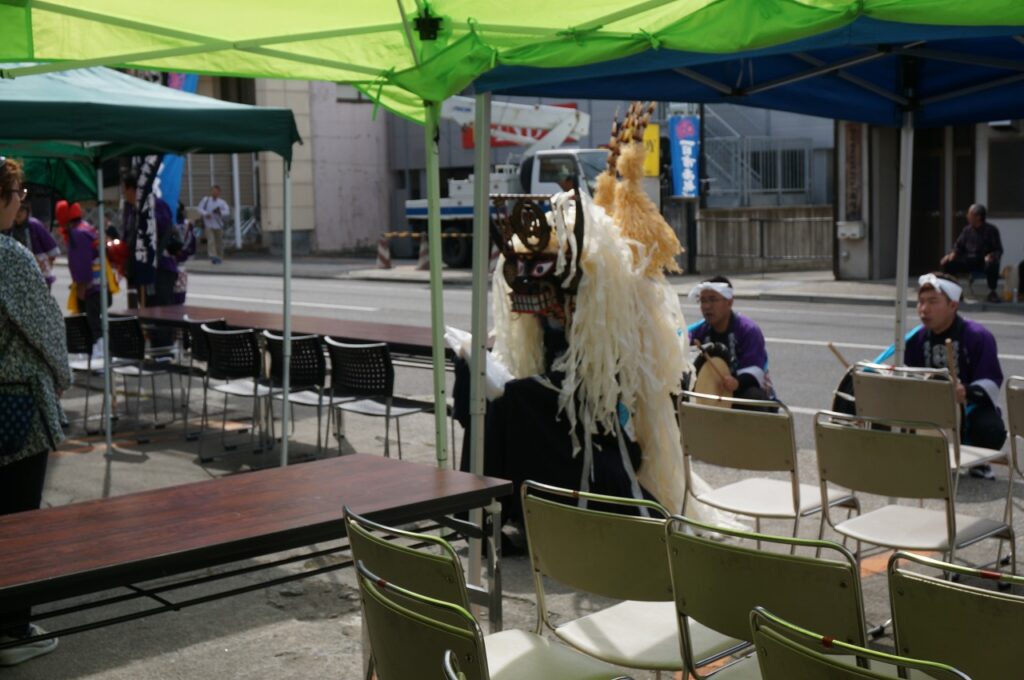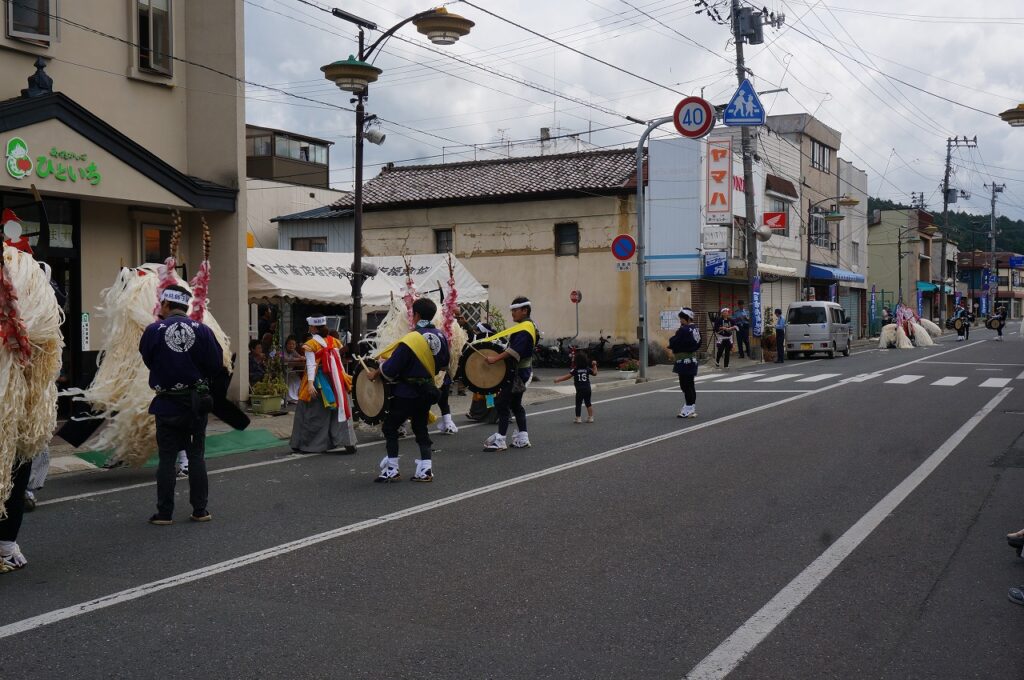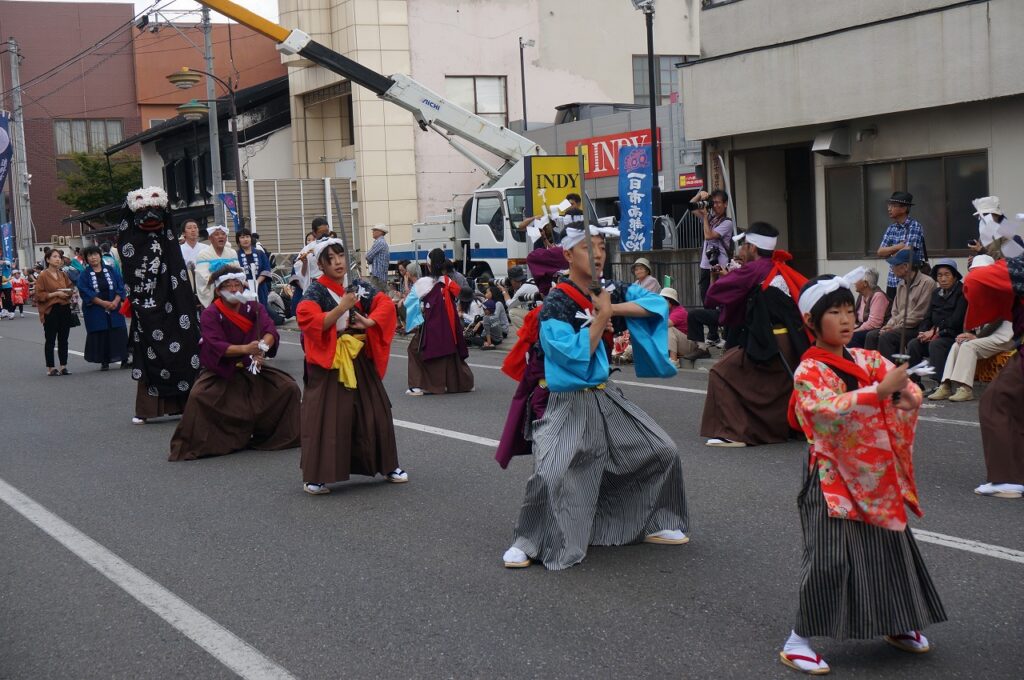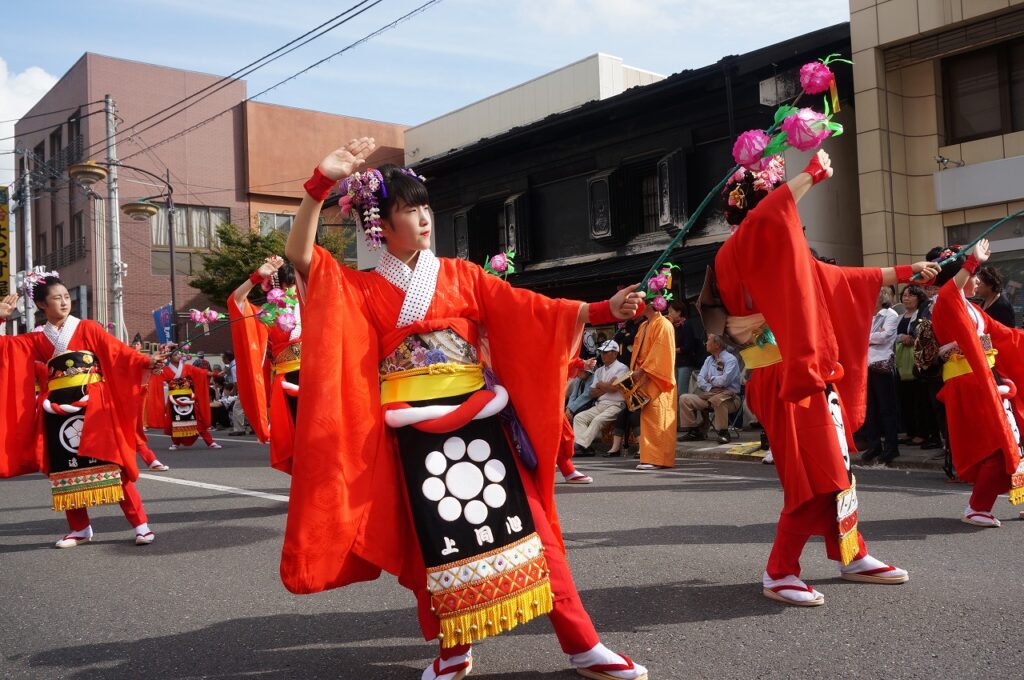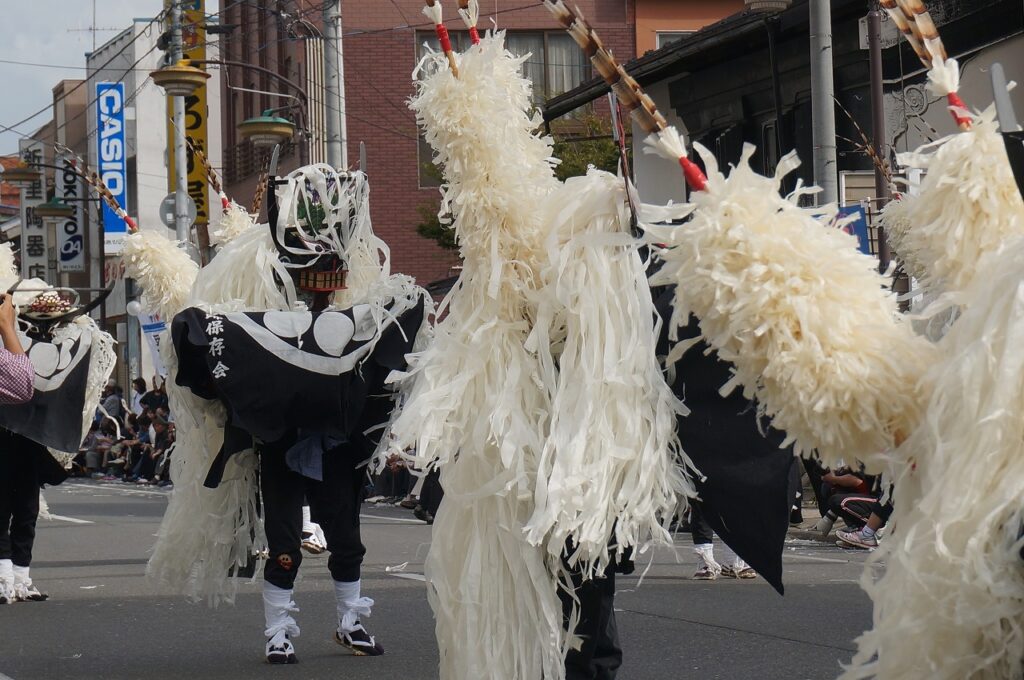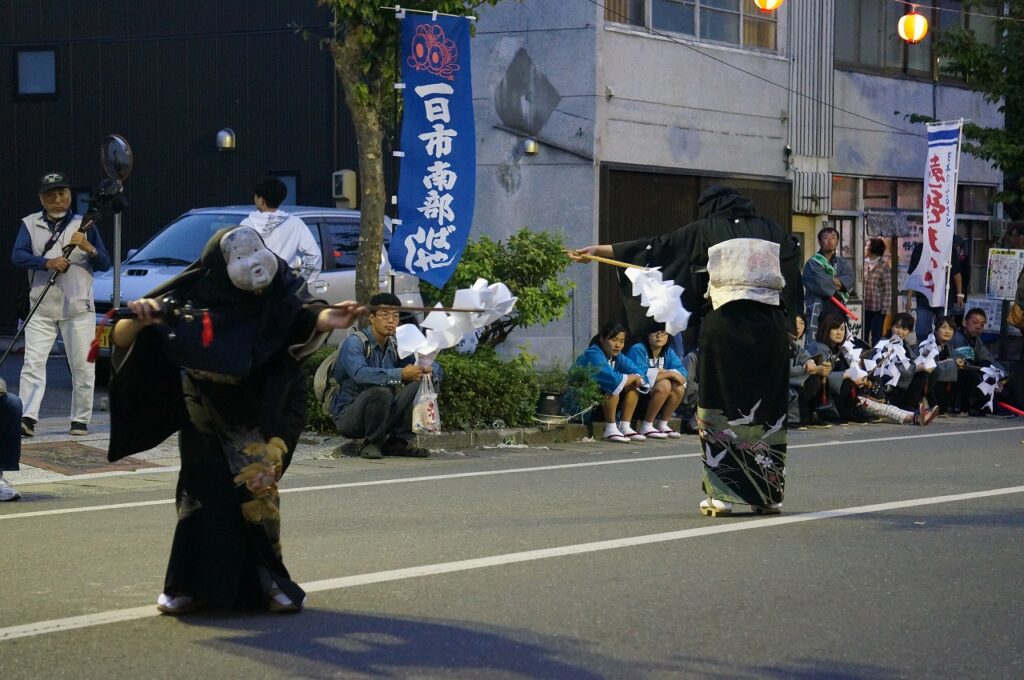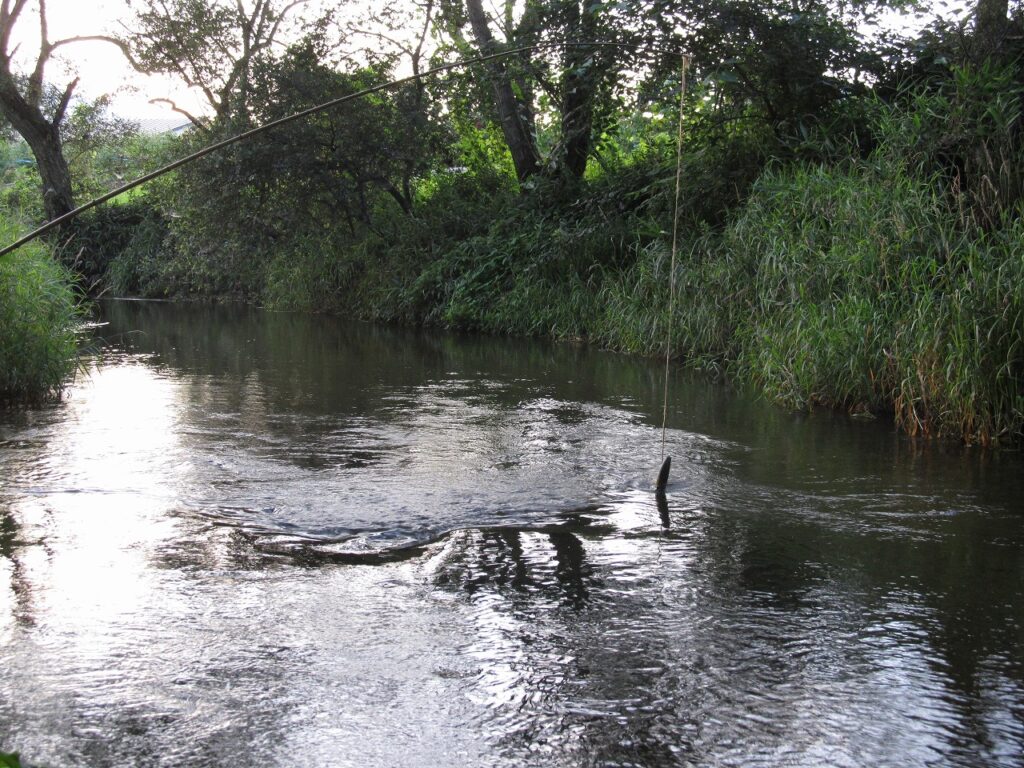Report: Tono festival ~Day 2
Did you sleep well last night?
It was fun meeting you all. I also got to hear a lot of old stories.
I’ll have some time today to show you around town a bit.



I didn’t notice it yesterday, but Komainu (the guardian dogs) here have kappa-like plates on their heads.
It is commonly known as “Kappa Komainu. After all, kappa are the biggest stars in Tono. Tono is also famous for having many other mysterious legends in the region. This stone monument commemorates a legend about a fox.
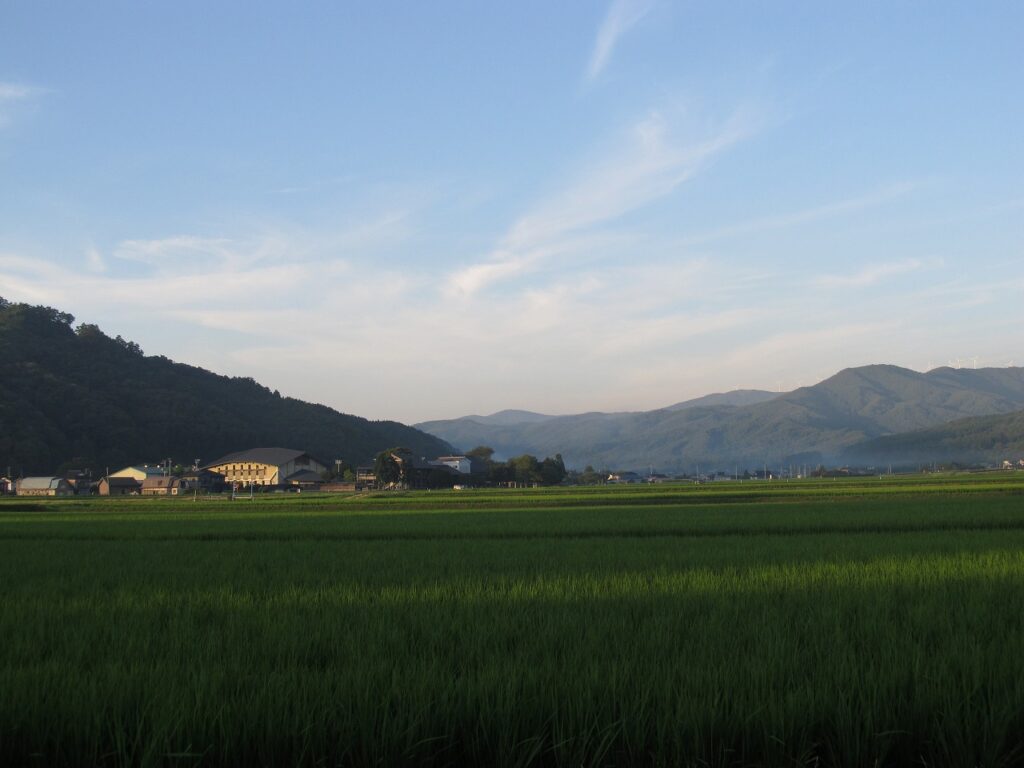

Perhaps it was because I had seen too much of the deer dance, even the clouds looked like deer horns.
Well, we’d better get back. Today’s main event is the dedication of the performing arts at the Tono Hachimangu Shrine on the other side of the station.
But that starts at noon, doesn’t it?
The performing arts groups are going to the shrine, to present their art and do “Kadozuke” again.
Road to Hachimangu Shrine
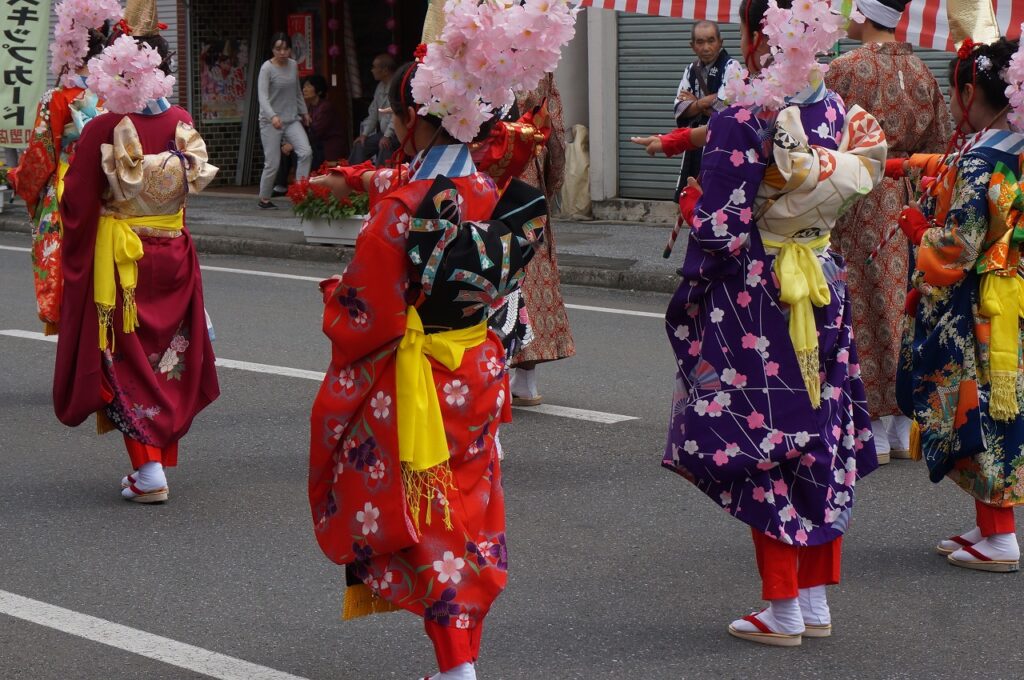

This is how they slowly made their way to the shrine, performing tricks from about 10:00 am.


In large facilities such as hospitals, groups come in one after another. It’s a sort of ”Kadozuke”.
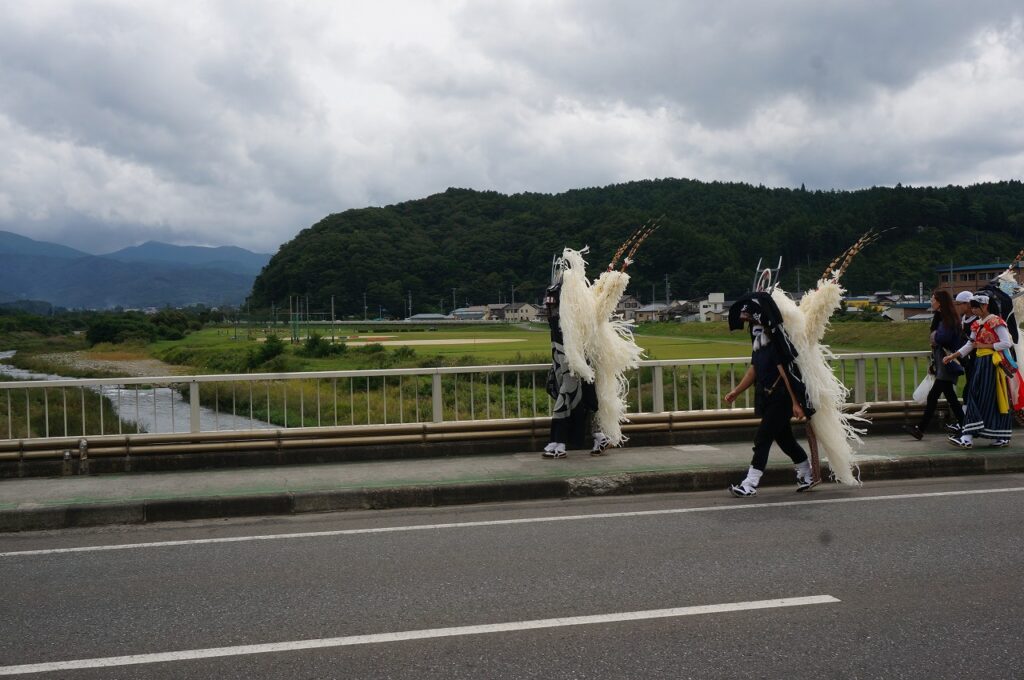

Still, I found it a strange sight to see deers, a kind of demonic transformation, walking around the city in broad daylight. Yokai and demons usually appear at night, don’t they?
That’s the charm of a festival, isn’t it? On the day of the festival, even if there are demons and kappa next to you, they won’t notice, just like us. While I was saying this, I realized that we were already at the shrine.
At the shrine


The first thing that takes place here is “yabusame” (horseback archery). The three most popular folk tales in Tono are Kappa, Zashiki-warashi (the strange child who brings good fortune to the house he dwells in) and Oshirasama. Do you know the story of Oshira-sama?
I haven’t heard that one.
In Tono, horses and people used to live together. Horses were like family. One day, a girl fell in love with a horse. But her father didn’t approve of it. Finally, he cut off the horse’s head and killed it. The grieving daughter ascended to heaven with the horse in front of her father. When her father saw what had happened, he regretted his actions and enshrined her as “Oshira-sama” for a long time.
Yabusame


Yabusame is a game in which horseback riders run and shoot at targets with arrows. In the old days, it was a requirement for samurai. It is held all over Japan, but Tono is special because it is a horse producing area.
I hear a familiar sound coming from upstairs.
In front of the main hall of the shrine


I thought I could hear sounds coming from upstairs, but there is also a performance going on in front of the main shrine during the yabusame.
Look. Here comes the “Wakumizu deer dance,” the only self-drumming style deer dance in Tono.
Unlike other drumming style groups, the performer has a short-hemmed costume. In addition, the feathers on their back are also bird feathers.
It is an art form that has been handed down from the nearby Esashi district and has a history of 150 years.
Parade at the riding ground




After the yabusame, the parade finally started.
There were so many people watching.
Not only the spectators, but also the people from the groups that are not in the parade are waiting together.
Free session
There was some kind of drumming coming from up there again.
Yes. During the parade, there are also various performances going on up there. This sound is the deer dance, right? Let’s go see it.




It’s all very exciting. It’s full of free movement that we don’t usually see.
That’s the power of the “Tane fukube” as a leader.
The deer performers seemed to be very spontaneous. The deer’s antlers were almost hitting Tane fukube, but he was able to avoid them at just the right angle. It’s amazing.


Now he is drawing another performer into the dance. This one didn’t seem to be a very good dancer.
He is always in charge of the taiko drumming.
The deer are taking advantage of this and are overwhelming him. Oh, the deer have finally eaten him. The dance itself is just a simple movement, but it’s amazing how good or bad it can be. I guess there are masters of everything.


A deer dancer I know told me about it. He is the son of a former master of the dance, but he said that lately it has become a little less interesting. He said that the master was a person who could improvise and perform various free movements. I guess that’s exactly what he was like.
It is incredible. Everyone in the audience called for an encore.
I’m glad I was able to show you something good today. Now it’s time to go back down and watch the parade.
Others
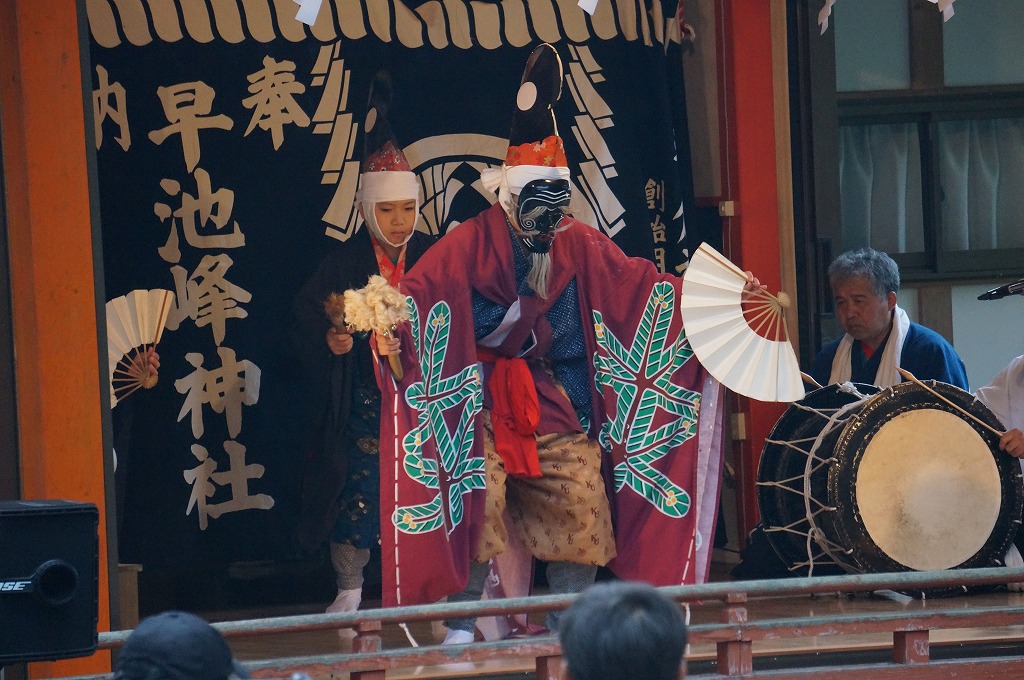
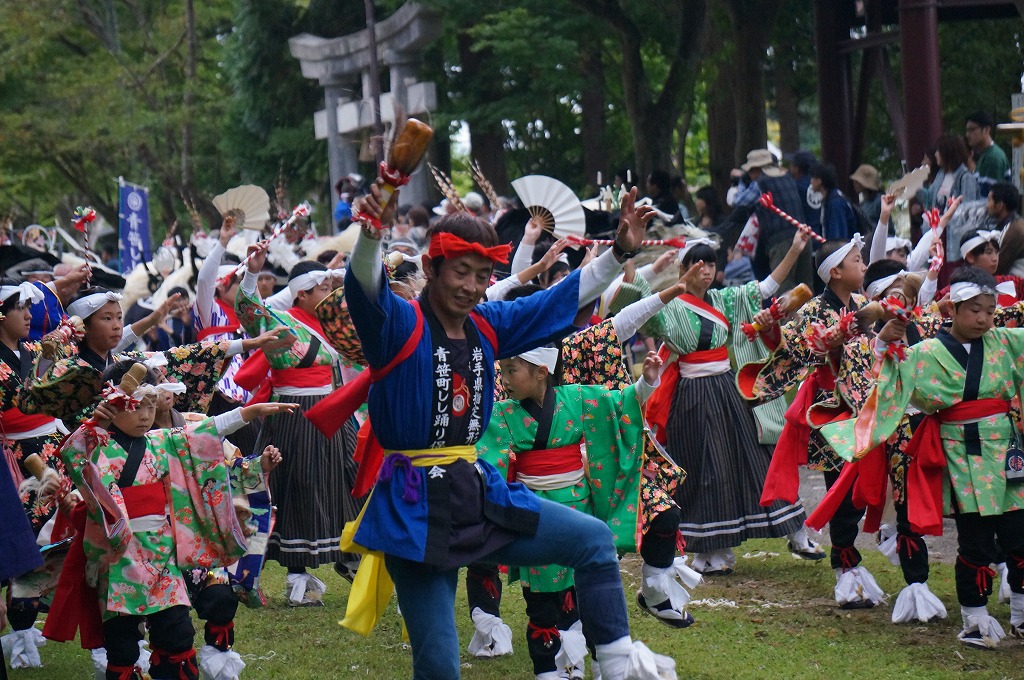
Kagura is also performed at the same time at Kagura-den.
Today, we have a rich variety of Tono traditional performing arts at Tono shrine. We can pick and choose whatever we want.
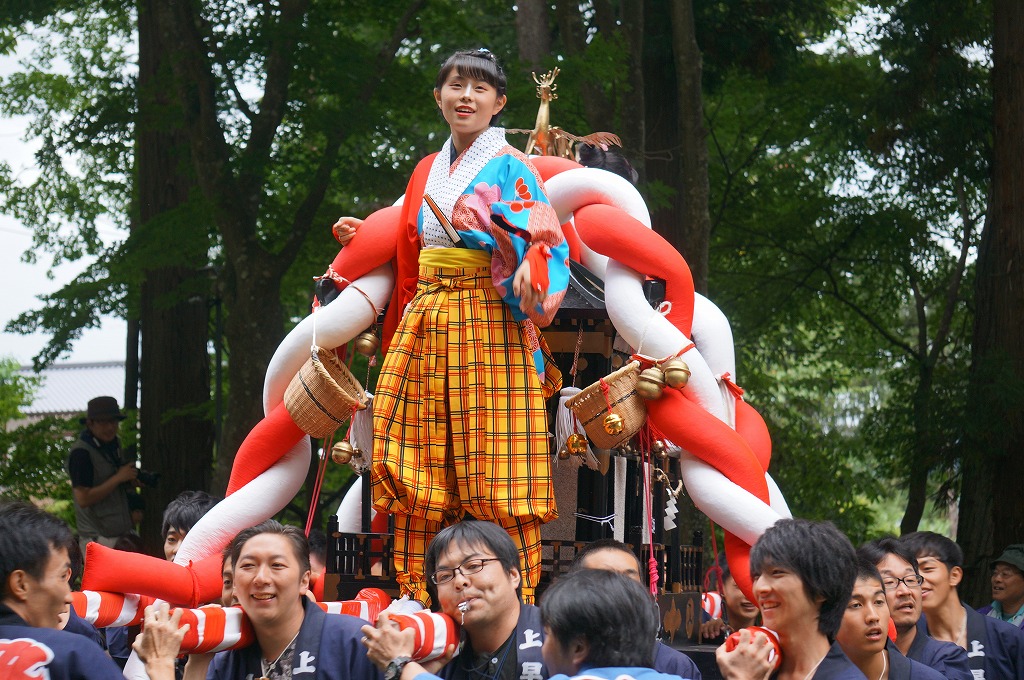
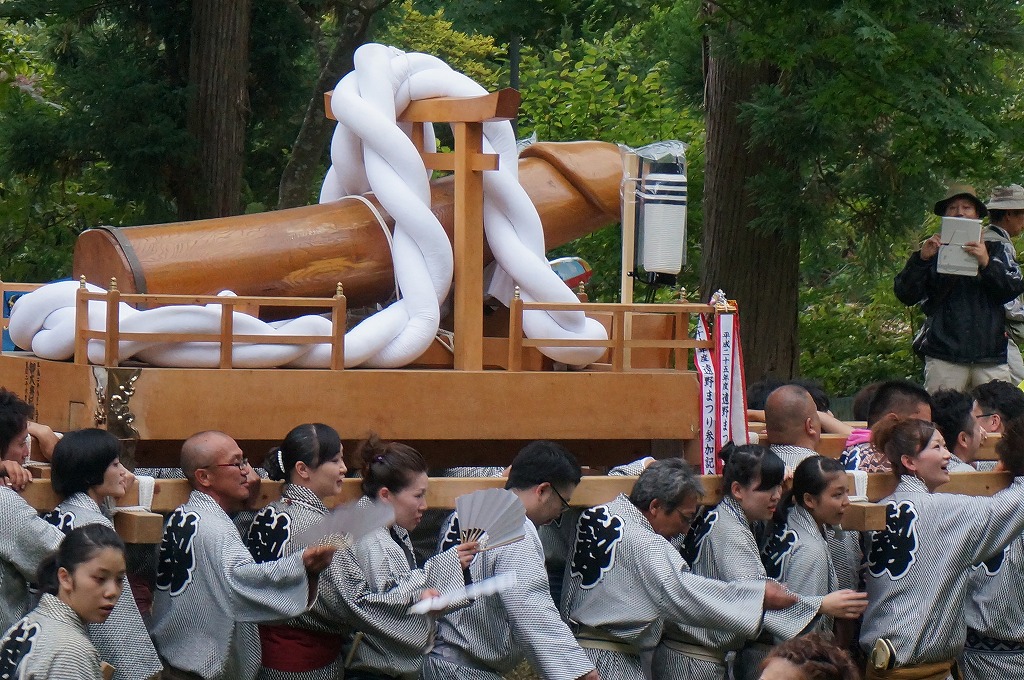
So it’s the women who ride the mikoshi here. How unusual.
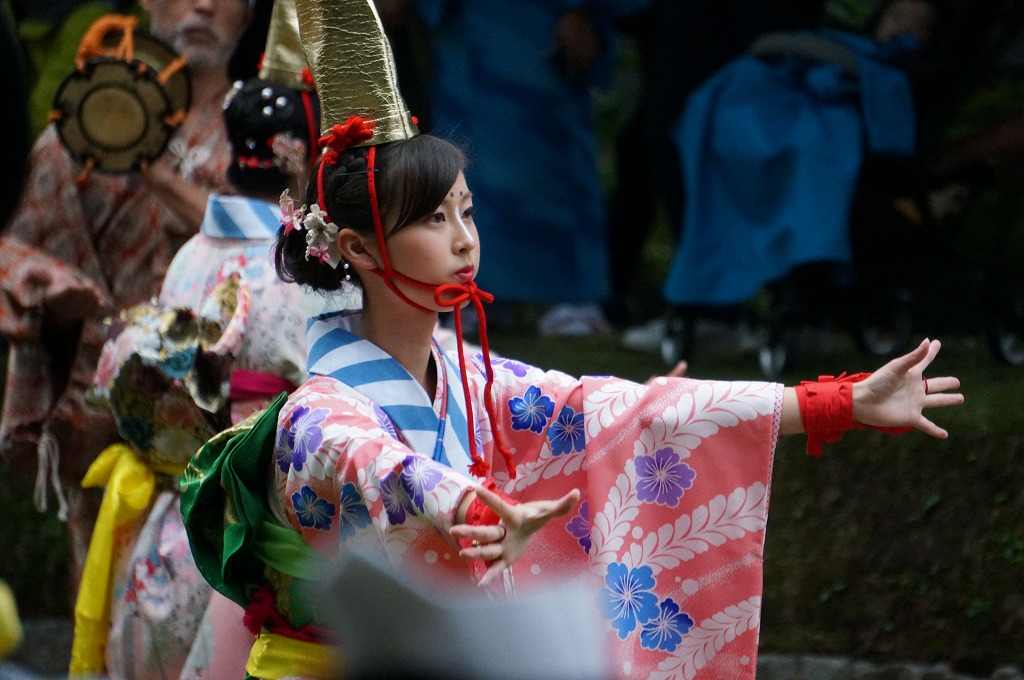

All the girls are cute too.
Stop it, stop it. That’s why people misunderstand kappa as rather lewd.
And Good-bye time


It’s time to say good bye.
It’s been fun. I hope you’ll come to Fukuzaki someday.
In Tono, the trees are already beginning to change color. Once the festival is over, winter will be just around the corner. But the festival season will come again. Please come and visit this typical region in Japan. You might even be able to meet a kappa!












